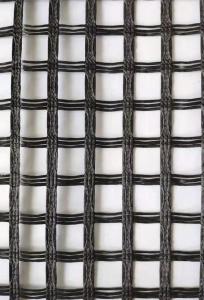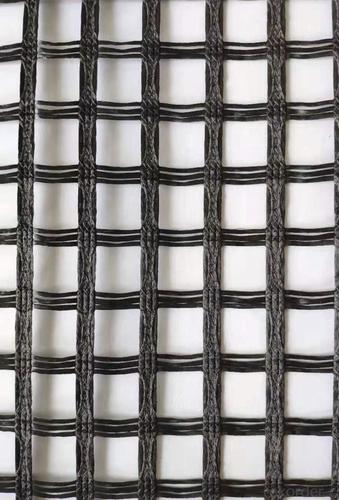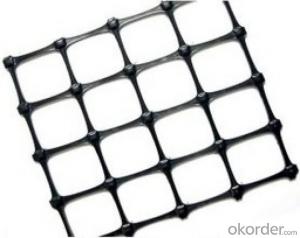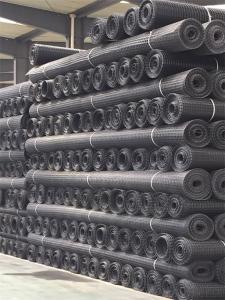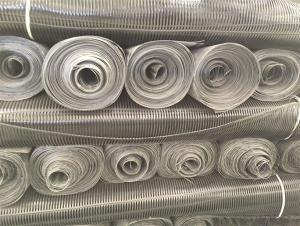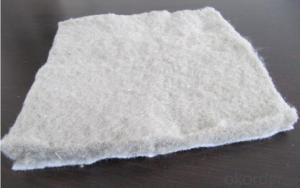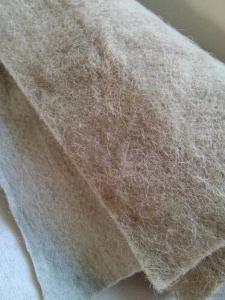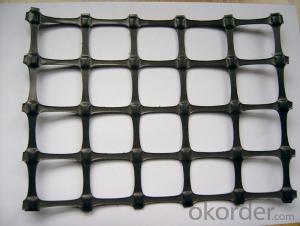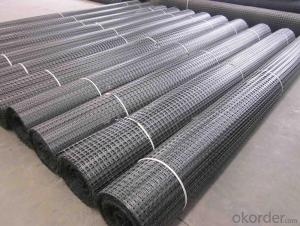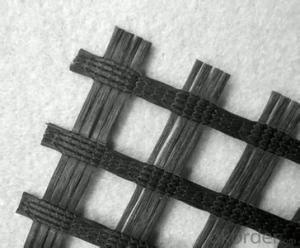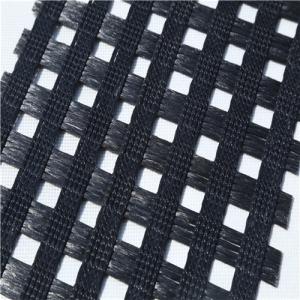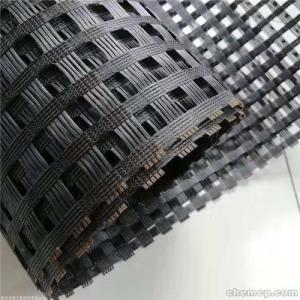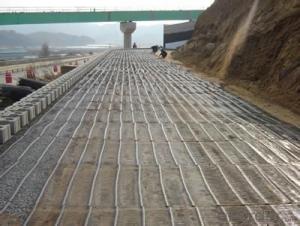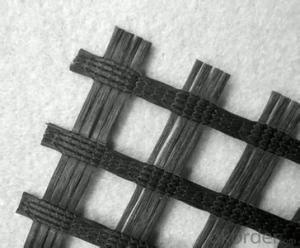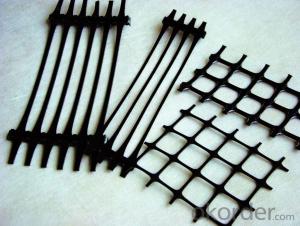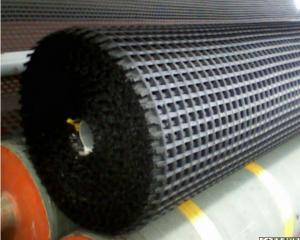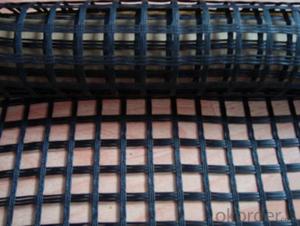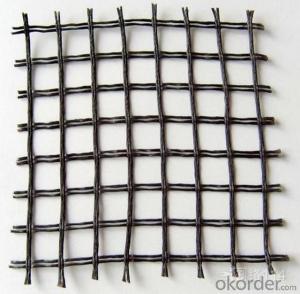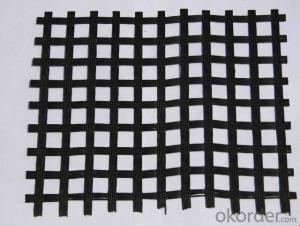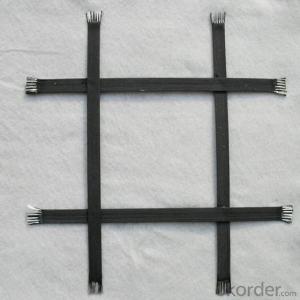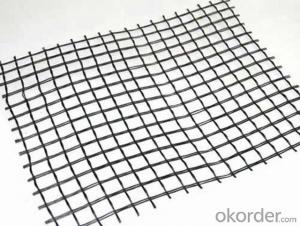Polyester Geogrids 80KN/80KN 120KN/120KN for Road Reinforcement
- Loading Port:
- Qingdao
- Payment Terms:
- TT or LC
- Min Order Qty:
- 5000 g/m²
- Supply Capability:
- 200000 g/m²/month
OKorder Service Pledge
OKorder Financial Service
You Might Also Like
Polyester Geogrid Detail Introduction:
Polyester Geogrid,a kind of stable knitted structure,with a certain open aperture,consists of a high tenacity polyester filament yarns and modified polymer coatings.It is normally used as a reinforcement for soft ground layer.
Polyester Geogrid Physical Property:

Polyester Geogrid Dimensional Property:

Polyester Geogrid Features:
1). High tensile strength
2). Low elongation
3).Anti-erosion, anti-aging
4).Good affinity with base material
5). Light weight, water drainage
Polyester Geogrid Application:
Land Stabilization
Reinforcement on Soft Soil Foundation
Pavements for Roads, Railways, Airport Runways
Temporary Roads and Unpaved Roads
Retaing Walls& Slops
FAQ:
1. What are we supplying?
We are specialized in producing .geotextile , geocell, geogrid, geomembrane,etc
2. How Many years experience do we have?
We have been exported to more than 15 countries in the past 14 years.
3. How long do we usually reply your request?
We always reply our customer within 24 hours.
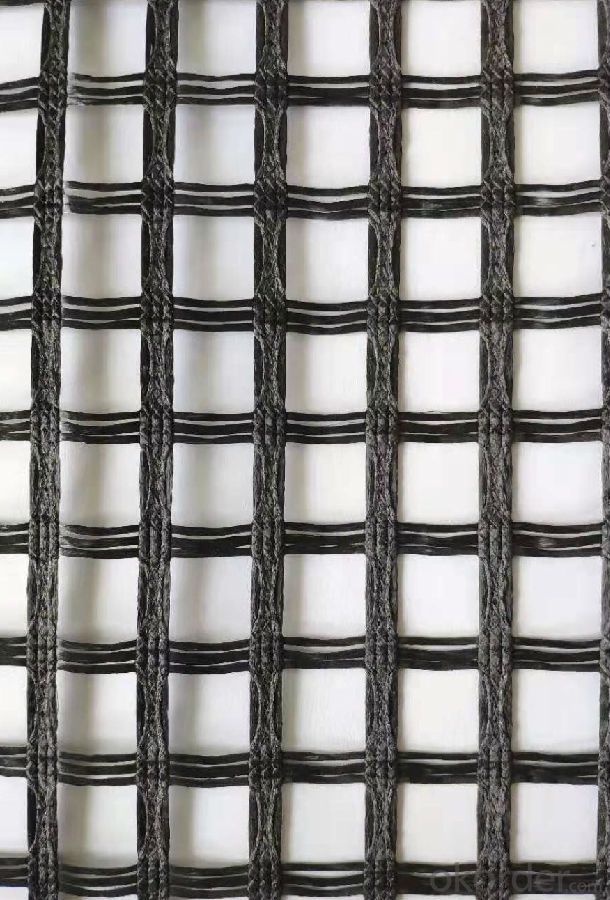
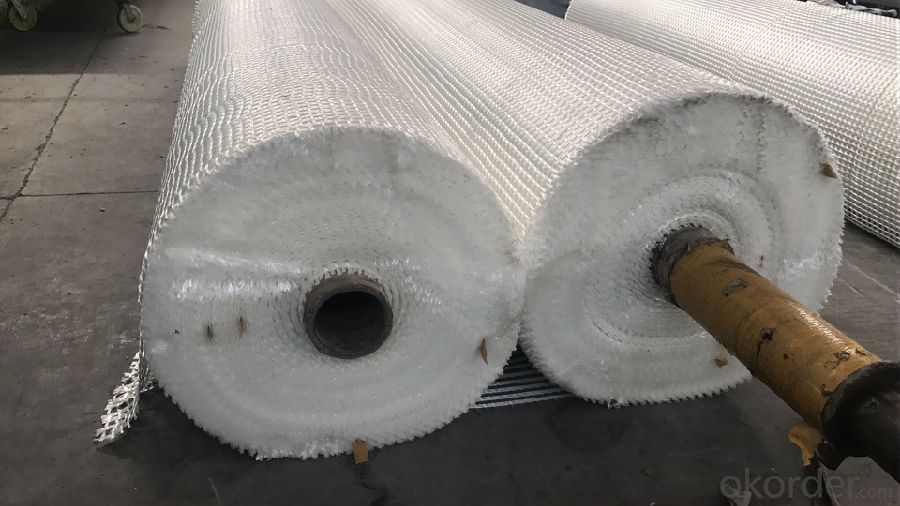
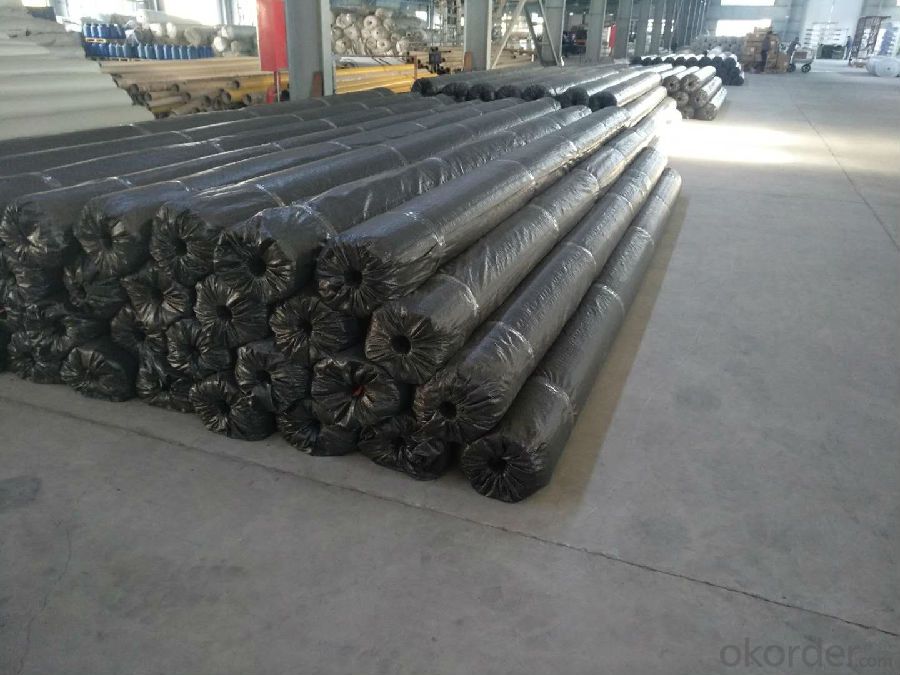
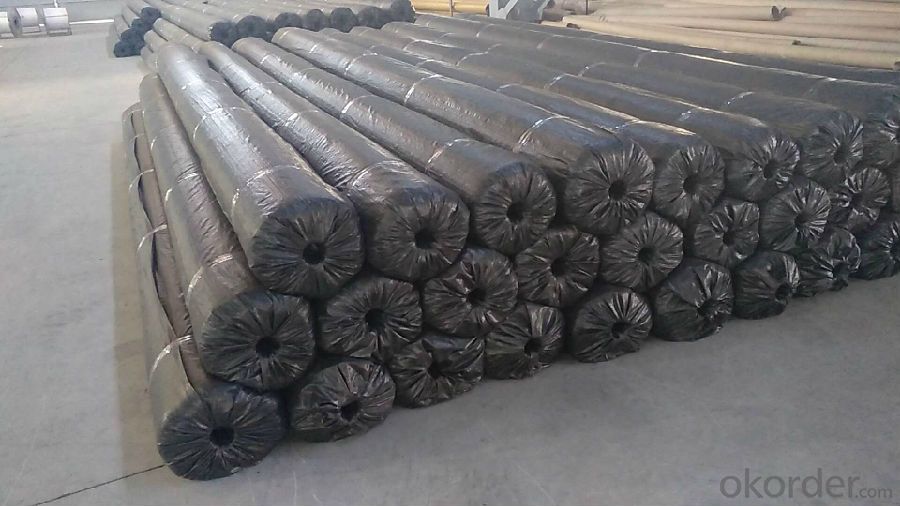
- Q: What materials are geogrids made of?
- Geogrids are typically made from a variety of materials, including polymers such as polyester, polyethylene, and polypropylene.
- Q: How do geogrids enhance the stability of railway track cuttings?
- Geogrids enhance the stability of railway track cuttings by providing reinforcement to the soil. They are placed within the soil layers of the cutting and act as a strong and flexible support system. Geogrids distribute the load more evenly, reducing the stress on the soil and preventing its movement. This helps to prevent slope failures, soil erosion, and overall instability, ensuring the long-term stability and safety of the railway track cuttings.
- Q: Are geogrids suitable for reinforcing landfill caps?
- Yes, geogrids are suitable for reinforcing landfill caps. Geogrids are commonly used in landfill engineering to enhance the stability and strength of landfill caps. They provide reinforcement and prevent the movement and erosion of soil, thereby increasing the overall efficiency and effectiveness of landfill caps in containing waste materials.
- Q: Are geogrids suitable for use in reinforced steep slopes?
- Yes, geogrids are suitable for use in reinforced steep slopes. Geogrids are engineered materials that provide stability and reinforcement to slopes by distributing and transferring loads. They effectively improve soil strength and prevent erosion, making them an ideal solution for reinforcing steep slopes and enhancing their stability.
- Q: How do geogrids help in reducing construction material consumption?
- Geogrids help in reducing construction material consumption by providing reinforcement to the soil, allowing for the use of less material in the construction process. They increase the strength and stability of the soil, enabling the use of thinner layers of construction materials such as aggregates or concrete. This results in cost savings and reduced environmental impact due to the reduced use of materials.
- Q: Geogrid nailed pictures and size
- U type nails, like the letter U, geogrid generally 0.6 multiplied by 80. You can also process
- Q: Can geogrids be used in reinforcement of retaining walls?
- Yes, geogrids can be used in the reinforcement of retaining walls. Geogrids are commonly used in retaining wall construction to enhance the stability and strength of the structure. They are typically placed within the soil layers of the wall to distribute the lateral forces and increase the overall resistance to soil movement. This reinforcement technique helps to prevent the wall from overturning or sliding, ensuring its long-term stability.
- Q: Are geogrids suitable for reinforcement of mechanically stabilized earth retaining walls?
- Yes, geogrids are suitable for reinforcement of mechanically stabilized earth retaining walls. Geogrids provide additional tensile strength and stability to the soil, increasing its overall load-bearing capacity. They help prevent soil movement, erosion, and potential wall failure, making them a reliable and commonly used reinforcement solution for retaining walls.
- Q: Are geogrids suitable for use in mechanically stabilized retaining walls?
- Yes, geogrids are suitable for use in mechanically stabilized retaining walls. Geogrids provide reinforcement to the soil and improve its stability, preventing potential failures and reducing the overall cost of construction. They enhance the load-bearing capacity of the soil behind the retaining wall, making it a reliable solution for various engineering applications.
- Q: Can geogrids be used in retaining wall reinforcement systems?
- Yes, geogrids can be used in retaining wall reinforcement systems. Geogrids are commonly used to improve the stability and strength of retaining walls by providing additional support and preventing soil erosion. They are typically placed within the soil layers of the retaining wall to enhance its structural integrity and prevent the movement of soil behind the wall.
Send your message to us
Polyester Geogrids 80KN/80KN 120KN/120KN for Road Reinforcement
- Loading Port:
- Qingdao
- Payment Terms:
- TT or LC
- Min Order Qty:
- 5000 g/m²
- Supply Capability:
- 200000 g/m²/month
OKorder Service Pledge
OKorder Financial Service
Similar products
Hot products
Hot Searches
Related keywords
